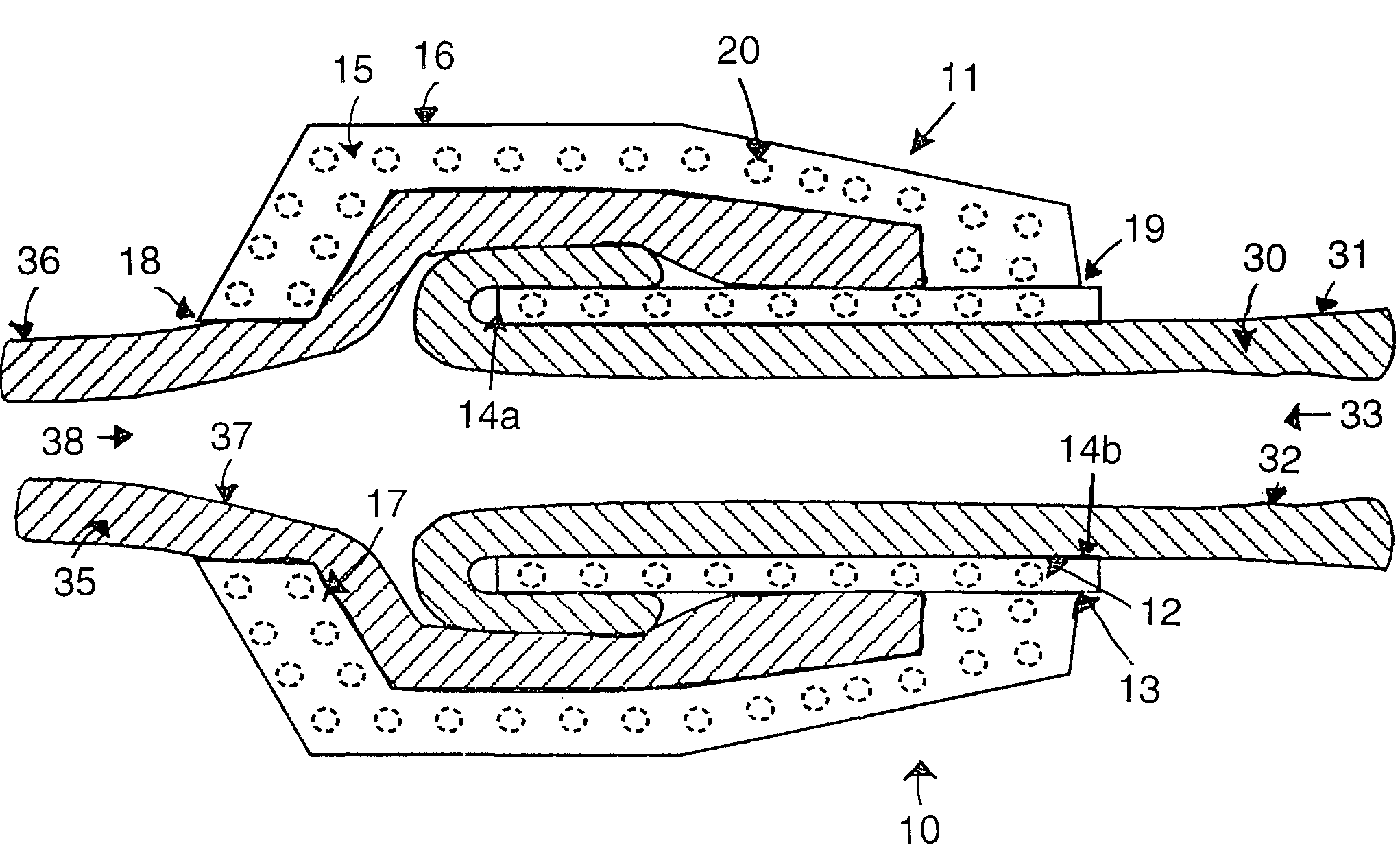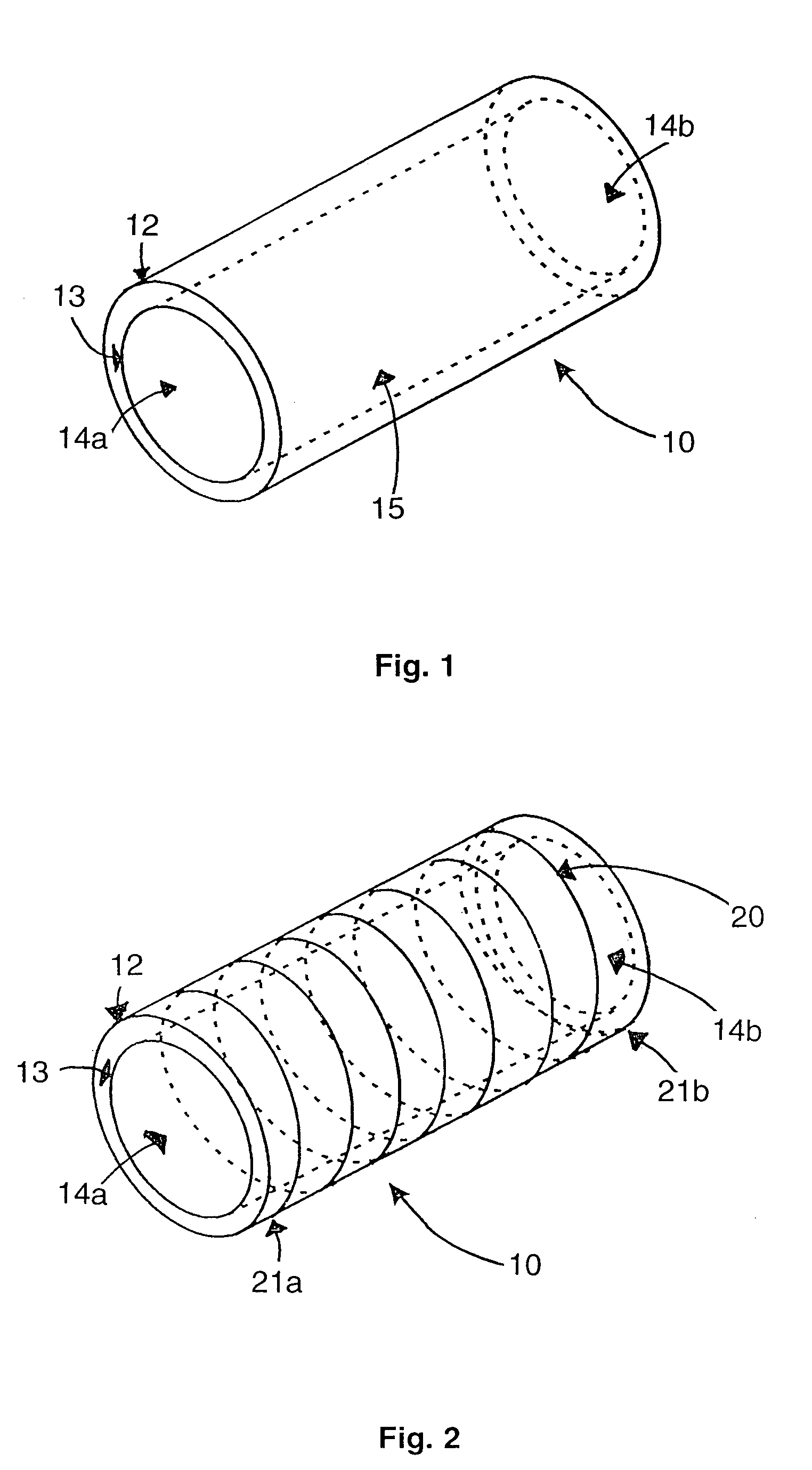Method and device for anastomoses
a technology of anastomosis and anastomosis, which is applied in the field of biomedical engineering and surgery, can solve the problems of operator variability, limited techniques, and promising tissue welding using lasers
- Summary
- Abstract
- Description
- Claims
- Application Information
AI Technical Summary
Problems solved by technology
Method used
Image
Examples
example 1
Heating of Test Metal
[0103]The tissue fusion activator device constructed operates at a frequency of about 650 kHz and has an output of approximately 210 W. At or near this frequency, the skin depth in tissue for canine skeletal muscle at 1 MHz (10) is about 205 cm, while for nickel it is 160 μm. Thus, no significant heating of tissue occurs as a direct result of the field. Heating only occurs in close proximity to the fusion composition. Two solenoid-type applicator designs were used, and were made up of 200 turns of solid copper wire, 32 and 22 G, thus resulting in a coil approximately 2.86 cm in diameter and 0.95 cm in width. The bore of the coil was about 0.5 cm. The coils were encapsulated in a Pyrex sleeve, through which low-viscosity mineral oil (Sigma-Aldrich Inc., St. Louis, Mo.) was circulated as a coolant. In each of these coils, the magnetic intensity at the center of the coil is calculated to be greater than 10,000 A / m, while at approximately 0.5 cm from a single coil f...
example 2
Heating and Coagulating of Test Fusion Formulation
[0105]Fusion formulations were made of 50-75% (w / v) albumin (Bovine serum, or ovalbumin; Sigma-Aldrich, St. Louis, Mo.) in saline with a metal additive of 5% or 10% (w / v) nickel flake (average particle size=50 micron, Alfa Aesar, Ward Hill, Mass.) or 10% iron filings (particle size <30 microns; Edmund Scientific, Tonawanda, N.Y.)). Aliquots of approximately 1 ml of the fusion composition was positioned in thin-walled glass tubes with a diameter of about 4 mm. The tube was then positioned in the bore of the applicator. The device was energized for a period of 20-30 seconds. Evidence of denaturation and coagulation was ascertained visually as the material changed color. This was confirmed by probing the composition with a needle, which demonstrated evidence of increased viscosity or stiffness. The composition coagulated with all combinations of applicator and composition. Compositions with more metal or iron versus nickel heated at dif...
example 3
Fusion of Vascular Tissue
[0106]A series of experiments were performed using donated carotid, femoral and brachial artery samples harvested from sheep. The samples were rinsed in physiologic saline, placed in wet gauze, and frozen at −20° C. before use. After thawing, each sample was bisected lengthwise with a scalpel. The fusion formulation of 5% Ni and 50% albumin was placed around the periphery of one end of a bisected sample, i.e. on the adventitia, and the end of the other bisected sample was manually dilated and pulled over the fusion formulation so that there was an overlap of a few millimeters. A glass rod was positioned within the intima of the two vessels as a support to hold the tissue in place. The sample was then positioned between the faces of two opposing solenoid-type applicators, and the sample exposed to approximately 210 W of power for about 30 seconds.
[0107]As seen in FIG. 12, fusion of the vessel 400 was visually apparent 410, and the fused tissue could not be te...
PUM
 Login to View More
Login to View More Abstract
Description
Claims
Application Information
 Login to View More
Login to View More - R&D
- Intellectual Property
- Life Sciences
- Materials
- Tech Scout
- Unparalleled Data Quality
- Higher Quality Content
- 60% Fewer Hallucinations
Browse by: Latest US Patents, China's latest patents, Technical Efficacy Thesaurus, Application Domain, Technology Topic, Popular Technical Reports.
© 2025 PatSnap. All rights reserved.Legal|Privacy policy|Modern Slavery Act Transparency Statement|Sitemap|About US| Contact US: help@patsnap.com



